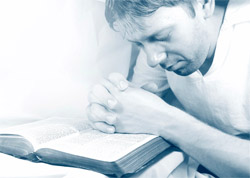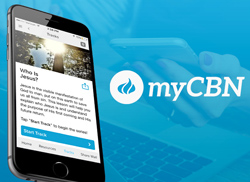A Guide to Sprains and Strains

Want solid Bible Teaching for Kids? See Superbook Now!
Pediatrician Dr. Martin Belson offers practical tips for preventing, diagnosing, and treating these injuries.
Definition of a Sprain
-
A sprain is an injury to a ligament (tissue that connects two or more bones at a joint). In a sprain, one or more ligaments is stretched or torn.
- Sprains are very uncommon in young children, because the ligaments are usually stronger than the growing bones and cartilage to which they are attached. Therefore, the growing part of the bone might break before the ligament is injured.
- Sprains happen most often in the ankle. Ankle sprains account for 20 – 30% of all sports-related injuries in young athletes.
Sprain Causes
A ligament becomes injured usually from a joint (e.g., ankle) being twisted or from a fall (e.g., fall on the side of the foot).
Sprain Signs and Symptoms
The usual signs and symptoms of a sprain are:
- Pain
- A “pop” in the joint may be heard
- Swelling around the joint
- Bruising
- Not being able to move or use the joint
Definition of a Strain
- A strain is an injury to a muscle or a tendon (tissue that connects muscle to bone). In a strain, a muscle or tendon is stretched or torn.
- Strains most commonly occur in the back and the hamstrings while playing sports such as football or wrestling.
Strain Causes
- The twisting or pulling of a muscle or tendon.
- A strain can be caused by an injury such as a fall, lifting heavy objects the wrong way, or overuse of muscles.
Strain Signs and Symptoms
A strain can cause:
- Pain
- Swelling
- Muscle spasms
- Muscle weakness
- Trouble moving the muscle
Treatment of Sprains and Strains
Treatments for sprains and strains are similar. To reduce swelling and pain in the first day or two, the following treatment may be recommended or performed: By remembering the word “RICE”, you can easily remember the four basic steps in the treatment of sprains and strains:
R: Rest the injured area until the swelling and pain have decreased.
I: Ice the injury for the first two days (15 - 20 minutes at a time, then wait at least one hour before icing again – you can place ice over an injury several times a day). Use a cold pack, a bag of frozen vegetables, or a plastic bag filled with crushed ice that has been wrapped in a towel.
C:Compression of an injured ankle or wrist may help reduce the swelling. This can be done with bandages such as elastic wraps, special boots, air casts and splints.
E: Elevate the injured joint (e.g., ankle, knee) up on a pillow (above the level of your heart). Crutches may be necessary to prevent continued stress on the injury.
Also, medicines, such as ibuprofen, may be helpful for swelling and inflammation.
Once immediate care has been started, the athlete should be seen again in 3 – 7 days so that the appropriate rehabilitation program can be started.
- Depending on the severity of the injury, your doctor may refer your child to a certified athletic trainer or physical therapist.
- After treating the pain and swelling, early mobilization of the injured joint is generally recommended to promote an earlier and more successful return to activity.
- The rehabilitation program will consist of range of motion exercises and stretching followed by strengthening exercises.
Ice or Heat for an Injury?
Ice: If you have an acute, or recent, injury (within the last two days), where swelling is a problem, you should be using ice treatment. Ice packs can help decrease swelling around the injury. Ice treatments may also be used for chronic, or long-term, conditions, such as an overuse injury. In this case, ice the injured area after the activity.
Heat: Do not use heat treatments after activity, and do not use heat after an acute, or recent, injury. Heat treatments should be used for chronic, or long-term, conditions, such as an overuse injury before the activity to help relax and loosen tissues, and to stimulate blood flow to the area. Heating an injury can be done using a heating pad or even a hot, wet towel. When using heat treatments, be very careful to use a moderate heat for a limited time to avoid burns.
Preventing Sprains and Strains
- Avoid exercising or playing sports when tired or in pain.
- Maintain a healthy weight.
- Wear shoes that fit well and that are not worn down on one side. (Wearing high-top shoes can prevent ankle sprains.)
- Be in proper physical condition to play a sport.
- Warm up and stretch before playing a sport .
- Wear protective equipment when playing (a lace-up ankle brace, for example).
- Run on flat surfaces.
- Clear a playground or playing surface of debris.
When to Call Your Pediatrician
- You should call your child's pediatrician if there is excessive pain and swelling after an injury.
- X-rays may be needed to make sure your child does not have a fracture.
- Your child's physician should be called any time a joint injury fails to heal properly or swelling recurs.





